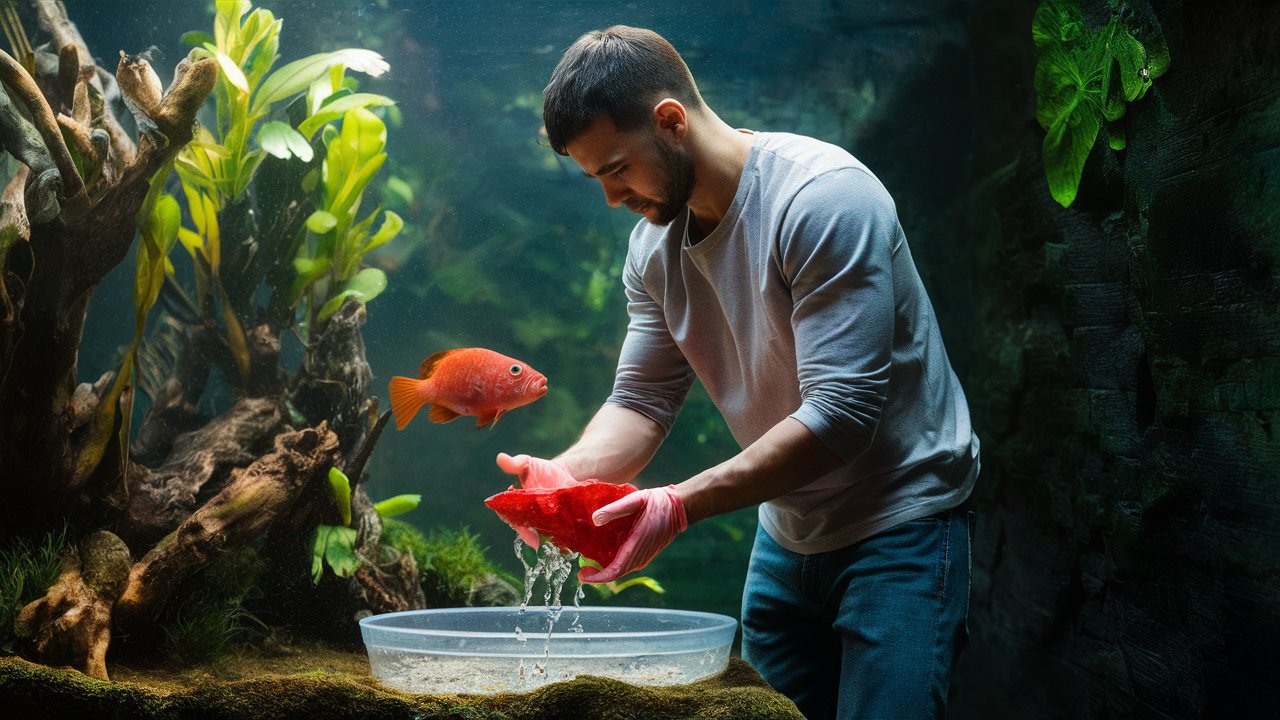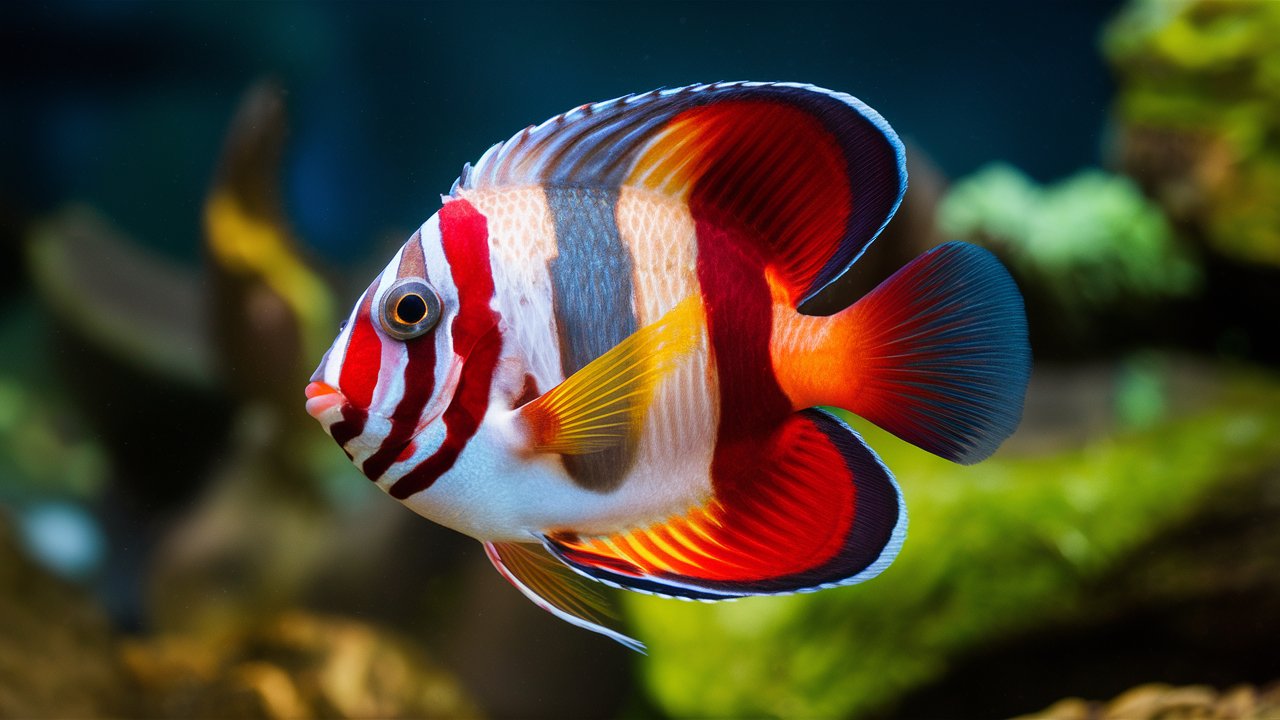How Long Do Blood Parrot Fish Live?
Introduction
How long do blood parrot fish live? If you’ve ever been captivated by the vibrant colors and unique shape of blood parrot fish, you’re not alone. These popular aquarium pets are beloved for their bright hues and charming personalities. One common question among fish enthusiasts is about their lifespan. Let’s dive into the factors that affect how long blood parrot fish live and how you can help your finned friends live a long, healthy life.
Overview of Blood Parrot Fish
Blood parrot fish are a hybrid species, a cross between the midas cichlid and the redhead cichlid. They are known for their distinctive round bodies, beak-like mouths, and striking red, orange, or yellow colors. These fish are a man-made species and are not found in the wild, making their care and lifespan unique to their captive environment.
Lifespan in the Wild vs. Captivity
Since blood parrot fish are not found in the wild, their entire lifespan occurs in captivity. On average, blood parrot fish live between 10 to 15 years when provided with proper care. However, some have been known to live even longer with optimal conditions and diligent care.
Factors Affecting Lifespan
Water Quality
Clean, well-maintained water is crucial for the health of blood parrot fish. Poor water quality can lead to stress and illness, significantly reducing their lifespan. It’s essential to regularly check water parameters like pH, ammonia, nitrite, and nitrate levels.
Diet and Nutrition
A balanced diet is key to keeping blood parrot fish healthy. They thrive on a mix of high-quality pellets, live foods, and vegetables. Providing a varied diet ensures they receive all the necessary nutrients to support their immune system and overall health.
Tank Size and Environment
Blood parrot fish need ample space to swim and explore. A tank size of at least 30 gallons is recommended for a single fish, with additional space required for more fish. The tank should also include hiding spots and decorations to mimic their natural environment and reduce stress.
Genetics
As a hybrid species, the genetics of blood parrot fish can play a role in their lifespan. Some fish may be predisposed to certain health issues due to their genetic makeup, which can affect their overall longevity.
Common Health Issues
Swim Bladder Disease
Swim bladder disease is common in blood parrot fish, causing buoyancy problems and difficulty swimming. This condition is often linked to poor diet or water quality and can be managed with proper care and treatment.
Ich and Parasites
Blood parrot fish are susceptible to ich (white spot disease) and other parasites, which can be introduced through new fish or plants. Quarantining new additions and maintaining clean water can help prevent these issues.
Fin Rot
Fin rot is a bacterial infection that causes fins to fray and deteriorate. It is often a result of poor water conditions or injury and can be treated with medication and improved water quality.
Tips for Extending Lifespan
Regular Water Changes

To keep the water quality high, do routine water changes. This helps remove toxins and waste that can build up in the tank and stress the fish. Aim for a 25-30% water change every two weeks.
Balanced Diet
Feed your blood parrot fish a varied and balanced diet. Include high-quality pellets, frozen or live foods, and occasional vegetables like peas or spinach to ensure they get all the necessary nutrients.
Proper Tank Setup
Ensure the tank is appropriately sized and well-decorated with hiding spots and plants. This not only provides a stimulating environment but also helps reduce stress, which can impact health and lifespan.
Monitoring and Care
Keep an eye out for any indications of disease or stress in your fish. Early detection of health issues allows for prompt treatment and can prevent more serious problems.
Signs of Aging in Blood Parrot Fish
As blood parrot fish age, you might notice changes in their behavior and appearance. They may become less active, show a decrease in appetite, or develop faded colors. Regular check-ups and maintaining optimal tank conditions can help manage these signs of aging.
Breeding and Lifespan
While breeding blood parrot fish can be challenging due to their hybrid nature, successful breeding does not necessarily impact the lifespan of the parent fish. However, ensuring the parents are healthy and well-cared-for is crucial for the health of the offspring.
Conclusion
Blood parrot fish are fascinating and colorful additions to any aquarium. With the right care, including maintaining clean water, providing a balanced diet, and ensuring a suitable environment, these fish can live for a decade or more. Understanding their needs and monitoring their health are key to helping them live a long, happy life.
FAQs
Q1: How often should I feed my blood parrot fish?
It’s best to feed blood parrot fish twice a day, providing only as much food as they can consume in a few minutes to avoid overfeeding.
Q2: Can blood parrot fish live with other fish?
Yes, blood parrot fish can coexist with other peaceful fish species. However, avoid aggressive or very small fish that might cause stress or be seen as prey.
Q3: What is the ideal water temperature for blood parrot fish?
The ideal water temperature for blood parrot fish is between 76°F and 80°F. Keeping the water within this range helps maintain their health and activity levels.
Q4: Do blood parrot fish need a filter in their tank?
Yes, a good quality filter is essential for maintaining clean water and a healthy environment for blood parrot fish.
Q5: How can I tell if my blood parrot fish is stressed?
Signs of stress in blood parrot fish include erratic swimming, hiding more than usual, loss of appetite, and changes in coloration. Addressing water quality and tank conditions can help alleviate stress.
